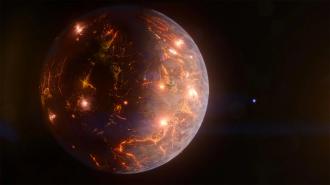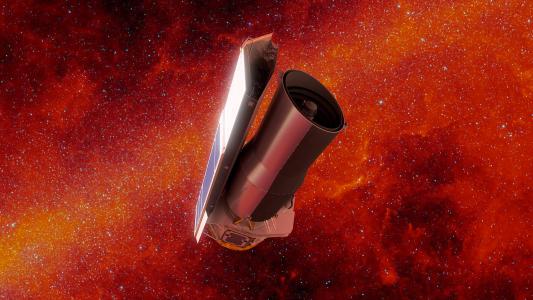Astronomers have discovered an Earth-sized exoplanet they suspect is covered in volcanoes — making it a promising lead in the hunt for extraterrestrial life.
Volcano planet: An international team of astronomers spotted the exoplanet, dubbed “LP 791-18 d,” using data from NASA’s retired Spitzer Space Telescope, the Transiting Exoplanet Survey Satellite (TESS), and ground-based observatories.
Based on their analysis, it has a radius 1.03 times that of Earth’s and a mass .9 times that of our home planet.
It’s now the third exoplanet discovered circling this star, a red dwarf star about 90 light years from Earth. Its orbit brings it close to one of those other planets, which is 7 times as massive as the Earth, named LP 791-18 c.
“Why is volcanism important? It is the major source contributing to a planetary atmosphere.”
Stephen Kane
Because planet c is much bigger than its newly discovered neighbor, it produces a gravitational tug during these close encounters, giving the newly found Earth-sized exoplanet an elliptical orbit that slightly deforms the planet every time it travels around its star.
It’s quite possible that deformation causes internal friction that leads to volcanism on the exoplanet’s surface — we’ve seen something similar happen with Jupiter’s moon Io.
“Why is volcanism important? It is the major source contributing to a planetary atmosphere, and with an atmosphere you could have surface liquid water — a requirement for sustaining life as we know it,” said Stephen Kane, co-author of a paper on planet d.
“Our discovery of LP 791-18 d gives us more hope that we might one day find signs of life on another planet.”
Karen Collins
If liquid water does exist on planet d, it would likely be confined to one half of the planet — unlike Earth, planet d is tidally locked, meaning the same side of the exoplanet is always facing its host star, and temperatures in that hemisphere are likely too hot for liquid water.
In addition to potentially creating water on planet d, volcanic activity might also send to the surface other ingredients believed to be necessary for life, such as carbon, adding to the excitement surrounding the discovery.
“Only a small proportion of the exoplanets discovered so far are thought to be able to support life,” said study co-author Karen Collins. “Our discovery of LP 791-18 d gives us more hope that we might one day find signs of life on another planet.”
Looking ahead: Astronomers have already booked time to study the larger planet c using the James Webb Space Telescope, and this new study suggests it’d be worthwhile to take a closer look at the Earth-sized exoplanet it shares a star with, too.
“With the potential to continue studying this planet with the James Webb Space Telescope, we will be able to fine-tune our observations and learn more about the planet’s likely volcanically fueled atmosphere,” said Collins. “Future discoveries will help us understand how the ingredients of life might have come to be on worlds other than our own.”
We’d love to hear from you! If you have a comment about this article or if you have a tip for a future Freethink story, please email us at [email protected].




